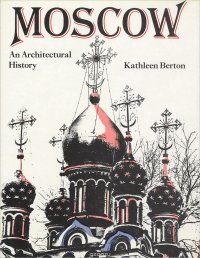By any account one of the world's most fascinating and important cities, Moscow is a place of contrasts. Eastern and Western architectural styles exist side by side; Russian traditionalism rubs shoulders with European fashions; and the Tzarist past lives alongside the Communist present. Even the constantly sub-zero winter temperatures contrast with buildings of a bright and warm appearance. MOSCOW: AN ARCHITECTURAL HISTORY is the first major study of the city's architecture to appear in English for over sixty years. In it the author examines the buildings of Moscow and relates its development to its political and historical background. She traces the growth of the city from its beginnings as a village in the mediaeval principality of Rus, to its present position as the capital of half Europe. Its chequered history is shown to be as much responsible for the architectural forms as are changes in artistic taste. Thus the characteristic onion domes derive from the Kievan style dominant in the Middle Ages when Muscovy was emerging as an important power. The later distinctive Moscow baroque combines traditional Russian features with current Western styles, reflecting the dual focus of Russian nationalism and Europeanization. In more recent times Stalin's architects produced a highly individual version of the skyscraper, which has become as much a symbol of the modern city as the Kremlin is of the old. Это и многое другое вы найдете в книге Moscow (Kathleen Berton)
Moscow Kathleen Berton
Подробная информация о книге «Moscow Kathleen Berton». Сайт не предоставляет возможности читать онлайн или скачать бесплатно книгу «Moscow Kathleen Berton»
